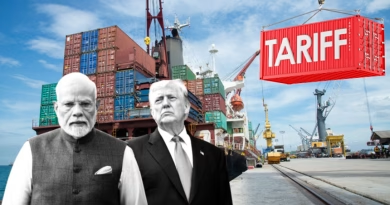India’s savings from discounted Russian oil imports are set to vanish after the United States slapped steep tariffs on Indian goods, a move analysts say could slash exports by over 40 percent this fiscal year.
Since early 2022, India has saved an estimated $17 billion by ramping up Russian crude purchases. But Washington’s new duties of up to 50 percent, effective from Wednesday, could wipe out those benefits, cutting nearly $37 billion from exports in sectors such as textiles, gems, and jewellery, according to the Global Trade Research Initiative (GTRI).
The fallout is expected to strain Prime Minister Narendra Modi’s government politically, with thousands of jobs at risk. It also threatens to complicate India’s delicate balancing act between Moscow and Washington.
“India needs Russia for defence equipment, cheap oil, and geopolitical support,” said Happymon Jacob, founder of the Council for Strategic and Defence Research. “But despite tensions under Trump, the US remains India’s most important strategic partner. India doesn’t have the luxury of choosing one over the other.”
Oil dilemma
Russian crude now makes up nearly 40 percent of India’s oil imports, led by Reliance Industries’ giant refining hub in Gujarat. Any sudden halt, officials warn, would disrupt supplies, spike domestic fuel prices, and even push global crude toward $200 a barrel. India also risks losing the 7 percent discount Russian oil currently offers.
New Delhi has accused Washington of double standards, noting that the US continues to import Russian uranium and other commodities, while China’s oil purchases have not faced similar penalties. The foreign ministry maintains that Russian crude is a “necessity compelled by global market conditions.”
Two government sources said India is exploring ways to ease tensions with Washington, including stepping up purchases of US energy, but it has no plans to cut Russian imports entirely.
Geopolitical stakes
The tariffs come as India intensifies diplomatic outreach. Senior officials visited Moscow this month, while Modi is preparing his first trip to China in more than seven years to attend the Shanghai Cooperation Organisation summit. He is expected to meet both President Vladimir Putin and President Xi Jinping.
Analysts warn the tariff row could spill into other areas, including US work visas for Indian professionals and offshoring of services.
“The US-India relationship may be at its lowest point since the 1998 nuclear sanctions,” Jacob said. “Competitors like China, Vietnam, Mexico, and even smaller players such as Pakistan and Kenya could seize India’s lost market share, potentially locking it out even after tariffs are rolled back.”
Domestically, Modi has pledged tax cuts to boost demand and reaffirmed support for farmers, a critical voting bloc ahead of elections in Bihar. But with the tariff shock threatening growth, India faces a turbulent path navigating its biggest strategic and economic challenge in years.






